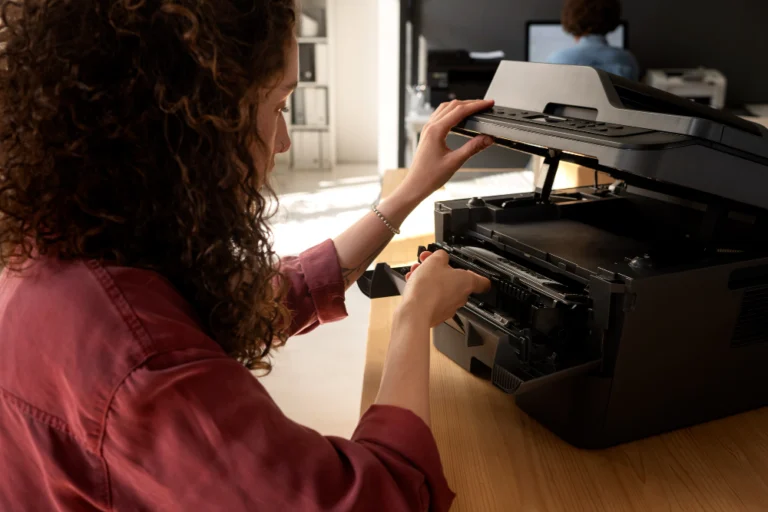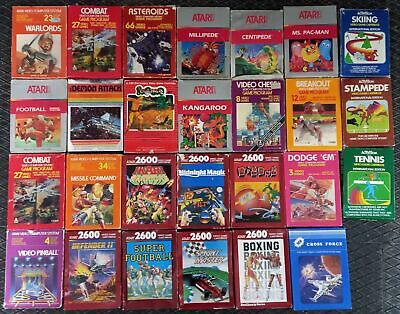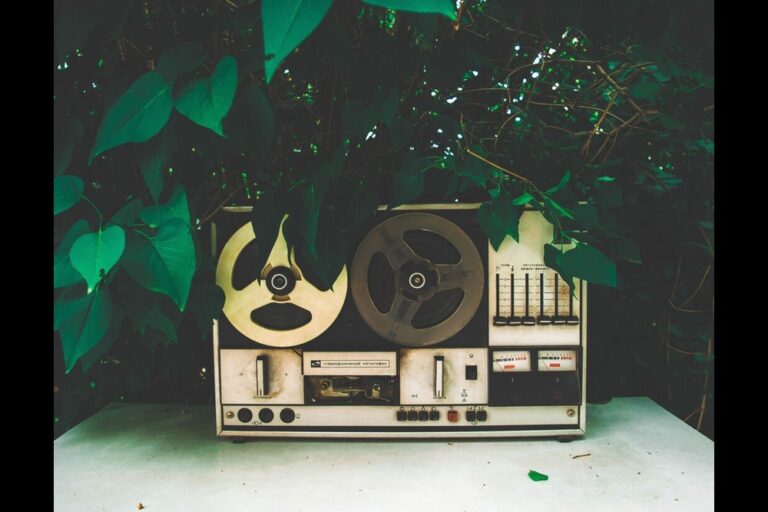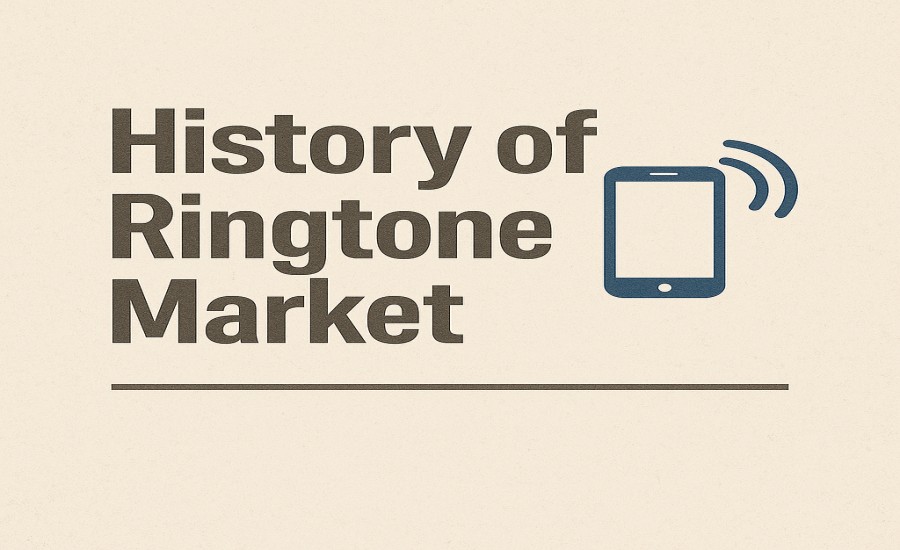
Picture this: It’s the mid-2000s. You’re in a crowded college canteen in Vadodara, maybe waiting for a bus, or just hanging out at the mall. Before smartphones had notification sounds, our phones had personality. The History of the Ringtones Market is a nostalgic look at how a simple alert became a multi-billion dollar industry and a cornerstone of mobile culture in the 2000s.
Suddenly, shattering the ambient noise, a loud, slightly tinny rendition of the latest Bollywood chartbuster erupts. It’s not coming from a radio; it’s emanating from someone’s Nokia 6600 or perhaps a Samsung flip phone. Heads turn. Some people roll their eyes in annoyance, others grin in recognition, maybe even tapping their feet.
The phone’s owner might let it ring just a little longer than necessary, a brief public performance before answering. This wasn’t just an alert for an incoming call; it was a statement.
It was a piece of personalized audio identity, likely purchased via a premium SMS shortcode for ₹50 or ₹100. It was a tiny snippet of music representing a massive, multi-billion dollar global industry: the golden age of the commercial ringtone.
The Monophonic Murmur (Mid-Late 1990s): “Simple Beeps & Custom Keys”
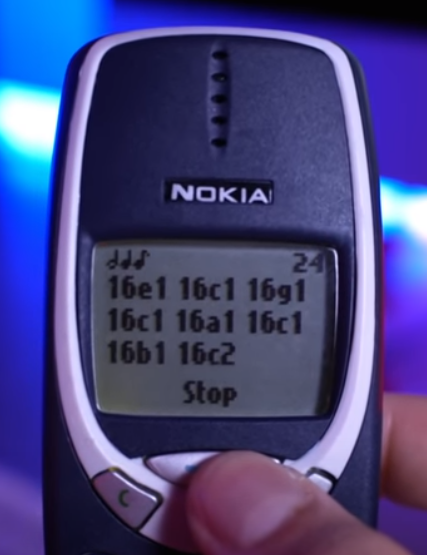
Before ringtones became big business, they were simple necessities. Early mobile phones, particularly the durable Nokia bricks that started appearing in India in the late 90s, came with a selection of built-in monophonic ringtones – capable of playing only one note at a time.
These were basic electronic beeps and melodies, functional but hardly expressive. The most famous, of course, was the “Nokia tune,” instantly recognizable globally, itself derived from a 1902 classical guitar piece, “Gran Vals,” by Francisco Tárrega.
The first hints of personalization came not from downloads, but from creation. Iconic phones like the Nokia 3210 and 3310 included the Nokia Composer. This feature allowed users to manually input simple melodies note by note using the numeric keypad. A specific sequence of key presses represented notes and durations.
Tech-savvy users and hobbyists would share these “composer codes” online or via SMS, allowing others to painstakingly recreate simple versions of popular songs or themes. It was rudimentary, geeky fun, but it planted the seed of wanting your phone to sound unique. The commercial potential, however, was minimal.
Tech Spotlight: Monophonic Ringtones & Nokia Composer
- Technology: Simple piezoelectric speakers or sound chips capable of producing one tone at a time.
- Content: Basic built-in electronic melodies (e.g., Nokia tune). User-created melodies via keypad input (Nokia Composer).
- Customization: Limited to selecting built-in tones or manually composing simple tunes.
- Distribution: Built into the phone; composer codes shared peer-to-peer.
- Significance: Established the concept of an audible phone alert distinct from a landline ring. Nokia Composer offered the first taste of user personalization, albeit highly technical.
Milestone Markers
- Mid-Late 1990s: GSM mobile phones become more common globally and start appearing in India. Monophonic ringtones are standard.
- ~1998 onwards: Nokia phones include the Composer feature.
Parallel Developments
- Late 1990s: Mobile phone adoption begins to accelerate. SMS messaging starts becoming popular. The concept of mobile content is nascent.
User Experience Snapshot
Remember scrolling through the limited list of default Nokia tones? Or meticulously typing in a long string of numbers and symbols shared by a friend to get a basic, beepy version of the Mission: Impossible theme? It was simple, often tedious, but it was the first step towards making your phone’s sound your own.
Price Point Perspective
This was essentially free. Built-in tones came with the phone. Composer codes were shared freely among enthusiasts.
The Polyphonic Profit (Early 2000s): “MIDI Music Goes Mobile”
The real commercial spark ignited when phones evolved beyond single beeps. Around 1999-2001, chipsets like Yamaha’s MA-series enabled phones (like the Nokia 3510, released 2002) to play polyphonic ringtones. Using MIDI (Musical Instrument Digital Interface) or similar formats (like SMAF), these phones could play multiple notes and simulated instrument sounds simultaneously.
Suddenly, ringtones could sound much more like actual music – with harmonies, melodies, and basic instrumental layers. This technological leap opened the floodgates for commercialization. Companies sprung up, licensing popular songs and creating MIDI versions optimized for mobile phone playback. The primary distribution method? Premium SMS.
Users would see an ad on TV, in a magazine, or on a WAP (early mobile internet) portal, text a specific keyword to a shortcode number (e.g., text “BOLLY1” to 58888), and receive the ringtone via a special message, with a premium charge (e.g., ₹30, ₹50, ₹100 or more) added directly to their mobile phone bill or deducted from prepaid balance.
This frictionless payment method was key. The polyphonic ringtone market exploded, particularly in Europe and Asia, including a massive surge in India, becoming the first major mobile content market.
Tech Spotlight: Polyphonic Ringtones & Premium SMS
- Technology: Mobile phone sound chips capable of playing multiple simultaneous notes (MIDI synthesis, SMAF).
- Content: MIDI-based versions of popular songs, themes, classical music. Sounded richer than monophonic but still synthetic.
- Distribution: Primarily via Premium SMS shortcodes; also WAP portals.
- Billing: Direct Carrier Billing via Premium SMS – charge applied directly to the user’s mobile phone bill or prepaid balance. Highly convenient.
- Significance: Created the first commercially viable mobile content market. Introduced millions to purchasing digital content via their phones. Made personalized ringtones widely accessible and popular.
Milestone Markers
- ~1999-2001: First polyphonic capable phones and sound chips (Yamaha MA series) appear. Nokia 3510 (2002) among early popular models.
- Early 2000s: Commercial polyphonic ringtone market booms globally. Premium SMS becomes the dominant billing method. Huge popularity in India.
Parallel Developments
- Early 2000s: Mobile phone penetration skyrockets globally, especially prepaid connections in markets like India. Color screens become common on phones. WAP provides early mobile internet access. SMS use is massive.
User Experience Snapshot
Hearing a polyphonic ringtone for the first time was a revelation! It sounded so much more ‘real’ than the old beeps. You’d see ads everywhere – TV commercials late at night, full pages in newspapers and magazines – promising the latest chart hits for your phone.
Texting that shortcode felt slightly illicit but exciting. Then, receiving the message and saving your new, richer-sounding ringtone was a moment of pure consumer triumph. Your phone finally had personality!
Price Point Perspective
Premium SMS charges made ringtones relatively expensive for a small piece of music (e.g., ₹50 in India when a full audio cassette might cost ₹60-80), but the convenience and novelty were compelling. This generated enormous revenue for mobile carriers, content aggregators, and music publishers.
The RealTone Revolution (Mid-2000s): “Your Song, Your Ring: The Billions Roll In”
If polyphonic tones lit the fuse, RealTones (also called TrueTones, Mastertones, Superphonic tones) were the explosion. Around 2002-2003, mobile phone technology advanced sufficiently (with better audio chips and support for formats like MP3, AAC, AMR) to play actual snippets of recorded music as ringtones.
This changed everything. Why settle for a synthesized MIDI version when you could have the actual chorus of the latest Shah Rukh Khan hit, a 50 Cent track, or the theme from Friends blasting from your pocket? RealTones offered far superior audio quality and authenticity. The market went into hyperdrive.
This was the absolute peak. The global ringtone market reportedly soared to over $4 billion, potentially hitting $5 billion annually around 2004-2007. Aggressive marketing became the norm.
Companies like Jamster (operating as Jamba! in some regions) blanketed TV channels with ads featuring catchy, often annoying, characters. The most infamous was Crazy Frog, whose ringtone rendition of “Axel F” (the Beverly Hills Cop theme) became a global phenomenon in 2005, topping music singles charts in numerous countries – a ringtone that became a legitimate pop hit!
In India, the RealTone era coincided with a massive boom in mobile usage. Carriers like Airtel, Hutch (later Vodafone, now Vi), Idea, and BSNL heavily promoted Bollywood RealTones, devotional music snippets, and regional hits. It became a significant revenue source.
Alongside standard ringtones, Caller Ring Back Tones (CRBTs), known locally as “Caller Tunes” or “Hello Tunes,” became exceptionally popular in India and other parts of Asia. This service allowed subscribers to replace the standard ringing sound heard by people calling them with a song or tune, often via a monthly subscription.
Tech Spotlight: RealTones & Caller Ring Back Tones (CRBTs)
- Technology: Phones capable of playing standard audio file formats (MP3, AAC, AMR, WAV).
- Content: Short clips (typically 15-30 seconds) of actual recorded music, sound effects, movie dialogue.
- Quality: Significantly higher fidelity than polyphonic tones.
- CRBTs: Server-side technology allowing subscribers to set music/audio that callers hear instead of a ringback tone. Billed via subscription by mobile carriers. Hugely popular in India.
- Significance: Represented the peak quality and peak revenue era of the commercial ringtone market. Made ringtones a major promotional channel for the music industry. CRBTs created a related, massive market particularly in Asia.
Milestone Markers
- ~2002/2003: First RealTone/TrueTone services launch (au in Japan often cited as a pioneer in late 2002).
- ~2004-2007: Global ringtone market revenue peaks at $4-5+ billion annually.
- 2005: Crazy Frog ringtone (“Axel F”) becomes a global phenomenon and chart-topping single.
- Mid-2000s: RealTones dominate the market. CRBT services boom in India and other Asian markets.
Parallel Developments
- Mid-2000s: iPod dominates digital music players. Digital music sales (via iTunes, etc.) begin to grow. Broadband adoption continues, but mobile internet remains relatively slow (GPRS/EDGE). Feature phones with MP3 playback capabilities become common.
User Experience Snapshot
Finally! Having the actual song blast from your phone felt like the ultimate personalization. Browse vast catalogs on carrier WAP portals or third-party sites, finding that perfect clip.
Maybe you subscribed to a Caller Tune service so your friends heard the latest Bollywood track when they called you. Of course, this also meant enduring everyone else’s loud, often repetitive ringtones in public spaces – the Crazy Frog era was particularly trying for many!
Price Point Perspective
RealTones commanded premium prices, often similar to or slightly higher than polyphonic tones via Premium SMS or WAP billing. CRBTs were typically monthly subscriptions (e.g., ₹30-₹50/month plus song selection charges in India). This period represented peak consumer spending on mobile audio personalization.
The Smartphone Silence (Late 2000s – Early 2010s): “Setting Your Own Tune”
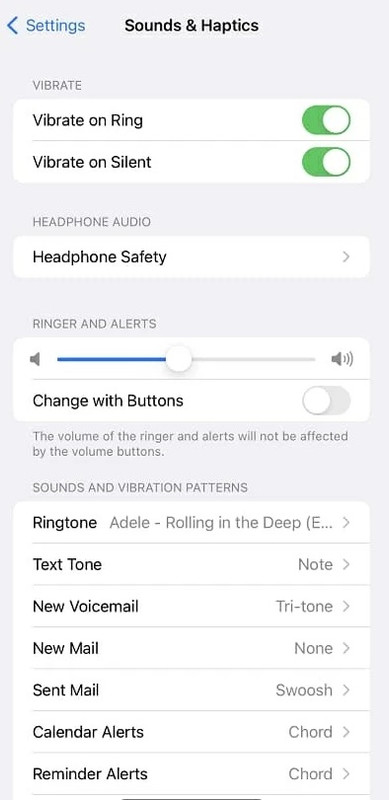
The multi-billion dollar ringtone party couldn’t last forever. The arrival and rapid adoption of smartphones, fundamentally changed the equation and led to a swift market crash.
The Apple iPhone (2007) and subsequent Android smartphones were key disruptors. Unlike feature phones with locked-down systems, smartphones allowed users much greater control over their files. Suddenly, setting any MP3 or audio file already on your phone as a custom ringtone became trivially easy. Why pay $3-$5 for a 30-second clip when you could use the whole song you already owned (or downloaded)?
Furthermore, digital music stores like the iTunes Store made purchasing full songs cheap and easy (often $0.99). Apple even introduced tools within iTunes to specifically create custom ringtone snippets from purchased songs, further undermining the premium ringtone vendors.
Beyond the technology, user habits shifted. With the rise of smartphones came the rise of constant connectivity and notifications from numerous apps (email, social media, games). Many users opted for vibrate or silent mode more often to manage the deluge of alerts without constant audible interruptions. The social cachet of having a loud, custom ringtone also began to fade, increasingly seen as obnoxious or dated. The need to publicly broadcast one’s musical taste via ringtone diminished as social media profiles offered other avenues for expression. The premium ringtone market, which relied on selling snippets of audio at high margins, collapsed rapidly.
Tech Spotlight: Smartphone Audio & Digital Music Stores
- Smartphones (iOS/Android): Allowed users easy access to the file system (to varying degrees) and the ability to select any compatible audio file as a ringtone.
- Digital Music Stores (iTunes, etc.): Offered full music tracks for low prices (~$1), often with tools to create ringtone clips, providing a cheaper alternative to premium ringtone services.
- User Behavior Shift: Increased use of silent/vibrate modes due to notification overload. Custom ringtones perceived as less “cool.”
- Significance: Smartphones empowered users to bypass the premium ringtone ecosystem entirely, while changing communication habits reduced the reliance on audible ringtones, leading to the rapid decline of the commercial market.
Milestone Markers
- 2007: Apple launches the iPhone, allowing easier use of owned music as ringtones (though initially via iTunes). iTunes Store sells music widely.
- 2008: Android launches, offering similar flexibility.
- Late 2000s/Early 2010s: Premium ringtone market revenues plummet dramatically worldwide. BMI research noted an 8% dip in the US market as early as 2007. IBISWorld reported a continued 15% decline in 2009.
- Early 2010s: Most users rely on default tones, silent/vibrate, or custom tones made from their own music files.
Parallel Developments
- Late 2000s/Early 2010s: Smartphone adoption explodes globally. Mobile broadband (3G/4G) improves. App stores become central. Streaming music services (Spotify, etc.) begin to emerge. Social media usage becomes dominant.
User Experience Snapshot
Remember the freedom of finally setting that favorite MP3 track as your ringtone on your first smartphone, without paying extra? Or deciding that the constant ringing and beeping was too much, and switching your phone permanently to vibrate? The premium ringtone, once a must-have, quickly felt like an unnecessary expense from a bygone era.
The Faint Echo (Present): “Default Tones & Nostalgia”
Today, the idea of a multi-billion dollar market based on selling 30-second song clips seems almost absurd. The dedicated commercial ringtone industry is a mere shadow of its former self. Most smartphone users stick with the default sounds that come with their device, customize alerts using sounds included in the OS, or simply keep their phones on silent or vibrate mode permanently.
Setting a custom song as a ringtone is still possible, but it’s no longer the cultural necessity or status symbol it once was.
Yet, the echoes remain. The sheer ubiquity of ringtones during their peak means they hold significant nostalgic value for the generation that grew up with them. Hearing the classic Nokia tune, a specific polyphonic melody, or even the undeniably annoying strains of Crazy Frog can instantly trigger memories of the 2000s mobile experience.
Caller Ring Back Tones (CRBTs) still have a market presence, particularly in India offered by operators like Jio, Airtel, and Vi, allowing for call personalization, but they too are less prominent than in their heyday.
The ringtone boom, though brief, fundamentally proved the viability of mobile content sales, paving the way for app stores, mobile games, and streaming subscriptions. It was a fascinating, loud, and incredibly profitable chapter, demonstrating how technology, business models, and cultural trends can converge to create a phenomenon, only for the next wave of innovation to wash it away just as quickly.
Tech Spotlight: Legacy & Modern Alternatives
- Legacy: The ringtone market established direct carrier billing (Premium SMS) as a viable mobile payment method. It proved consumer willingness to pay for mobile personalization and content. It provided a massive, if temporary, revenue stream for music labels and artists.
- Modern Alternatives: Default OS sounds, custom tones from user music libraries, streaming music services, app notifications (often customized within the app), vibrate/silent modes. CRBTs persist in some markets.
- Nostalgia: Strong cultural memory associated with iconic ringtones and the experience of customizing phone sounds in the 2000s.
- Significance: While the commercial market collapsed, the ringtone era influenced mobile payments, music promotion, and our relationship with personalized mobile audio alerts.
Milestone Markers
- Mid-2010s onwards: Premium ringtone market largely defunct. Default tones or silent/vibrate become the norm.
- Present: Nostalgia for classic ringtones persists. CRBT services continue in markets like India but are less dominant.
Full Circle Reflections
From the simple, programmable beeps of early Nokias to the multi-billion dollar global trade in 30-second MP3 clips of chart-topping hits, the journey of the ringtone was a wild ride. It perfectly captured a specific moment in technological history – when mobile phones were becoming personal communication hubs but lacked the sophisticated multimedia capabilities and open ecosystems of today’s smartphones.
Ringtones transformed our phones from simple communication tools into personalized accessories, badges of musical taste, and audible status symbols. They fueled a massive, if short-lived, industry, leveraging new technologies like polyphonic sound and RealTones, and innovative (for the time) payment mechanisms like Premium SMS.
They annoyed us in public, defined teenage self-expression, and even launched improbable music careers (hello, Crazy Frog!). In India, the ringtone and Caller Tune boom was particularly pronounced, deeply tied to the explosion of mobile usage and the love for Bollywood music.
The crash was just as dramatic as the rise, a victim of the very technological progress it heralded. Smartphones gave users the power to be their own ringtone creators, and streaming offered limitless music access, rendering the premium snippet obsolete.
Yet, the echo of that era – the memory of saving up for that perfect polyphonic tune, the shared annoyance of Crazy Frog, the iconic Nokia chime – remains a powerful piece of tech nostalgia, a reminder of when our pocket playlists were announced to the world, one call at a time.
The Heritage Impact: The Sound of Mobile Commerce
The ringtone craze left a significant legacy:
- Mobile Content Market: Proved the viability of selling digital content directly to mobile users, paving the way for app stores, mobile games, and streaming subscriptions.
- Direct Carrier Billing: Popularized Premium SMS and carrier billing as a widespread mobile payment mechanism.
- Music Industry Revenue: Provided a substantial, albeit temporary, new revenue stream for music labels and artists during a challenging period (post-Napster, pre-streaming dominance).
- Music Promotion: Became a major channel for promoting new singles and artists to a mobile audience.
- Personalization: Cemented the idea that mobile devices should be customizable and reflect user personality.
- Cultural Phenomenon: Created shared auditory experiences and pop culture moments (Crazy Frog, iconic Bollywood ringtones in India).
It was a brief, loud, and lucrative beep in the history of technology, whose reverberations helped shape the mobile world we live in today.
FAQ: Ringing Up the Past
-
When were commercial ringtones most popular?
The market peaked in the early-to-mid 2000s, roughly between 2003 and 2007, driven first by polyphonic tones and then exploding with RealTones (MP3 snippets).
-
How big was the ringtone market at its peak?
Global annual revenues reached billions of US dollars, with estimates commonly citing figures in the range of $4 billion to over $5 billion around 2004-2006.
-
What’s the difference between Polyphonic Ringtones and RealTones/Truetones?
Polyphonic ringtones used MIDI-like technology to play multiple synthesized notes simultaneously, creating richer melodies than earlier single-note (monophonic) beeps. RealTones/Truetones were actual audio recordings, typically short clips (15-30 seconds) of songs or sound effects in formats like MP3 or AAC, offering much higher fidelity.
-
Why did the commercial ringtone market decline so quickly?
The main reasons were the rise of smartphones (allowing users to set any MP3/audio file as a ringtone for free), the availability of cheap full-song downloads from stores like iTunes (often with ringtone creation tools), the growth of streaming music services, and a cultural shift towards using silent/vibrate modes more often.
-
What are Caller Ring Back Tones (CRBTs) / Caller Tunes?
CRBTs are a service where the person calling hears a song or custom audio chosen by the phone owner, instead of the standard ringing sound. This service became extremely popular, especially in India (“Caller Tunes,” “Hello Tunes”) and other parts of Asia, often offered as a monthly subscription by mobile carriers, and has persisted longer than the standard ringtone market in some regions.

